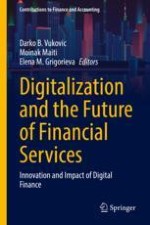This book develops insights of digitalization and the future of financial services to originate an innovative approach to financial field, in order to underpin research and practice in the wide area of digital finance. The aim of this book is to extend our understandings on how digitalization and the future of financial services can be helpful in different business circumstances in many cross-functional financial areas, such as financial markets, financial risk management, financial technologies, investment finance, etc. Thus, the book aims at addressing the relevance of digital finance for different players, highlighting differences in tools and processes as well as identifying innovative practices in financial digitalization. This can result in some novel theoretical and practical insights that can foster financial players, in order to proactively explore and exploit opportunities in financial digitalization and offset financial risks and increase efficiency.
